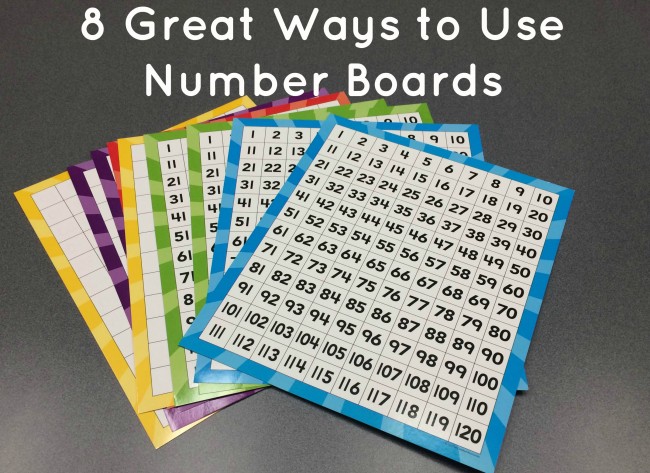
Number Boards are great tools to practice counting, look for number patterns, and teach number relationships. Here are some great ways to use Number Boards in and out of the classroom:
Familiarize Students with Number Boards
1) Have students look for “special numbers” on their boards, such as the days they were born, their ages, the number of people in their families, etc. Have students share their special numbers with partners. Have each partner find the other partner’s numbers.
2) Call out a number on the board and have students find the “number neighbors” of each one that is called. Have them find the numbers above, below and to the number called.
3) Picture It! Call out the following numbers and have students shade them in on their on their boards. There will be a completed picture once all the numbers have been shaded. 23, 38, 69, 86, 62, 55, 27, 33, 87, 73, 37, 84, 34, 28, 78, 56, 24, 85.
Number Patterns Activities
4) Have students shade in all numbers that have a 2 in either the ones or tens place. Discuss any patterns and number relationships the students notice. Then, with a different color, have them shade in all the multiples of 2, and discuss differences in the patterns between the two categories. You can do this with other digits as well.
5) Have the students shade in the numbers 6, 15, 24, 33, 42, and 51. Notice how how the sum of the digits in each number is 6. Ask students to try this with other digits and other diagonals they find on the number board.
6) Have students shade in the numbers 2, 13, 24, 35, 46, 57, 68, and 79. Notice that the sum of the digits are as follows: 2, 4, 6, 8, 10, 12, 14, and 16. Have students try shading in another diagonal of odd digits to see if an odd pattern occurs.
Counting Activities
7) Use a blank 120 number board to create a simple shape (such as a heart or arrow) that you would like students to shade in on their own boards. Create number clues for each number you shaded, such as “3 more than 20” or “7 less than 58.” Either write down the clues for the students to follow, or read them aloud to the class as the students shade in each number.
Addition and Subtraction Activities
8) Write an addition or subtraction problem on the board, such as 23 + 45. Have students place a marker on 23, then have them count 4 rows down, reminding them that each row increased by ten. Remind them that each column increases by one, and have them count 5 spaces to the right. Demonstrate more examples for both addition and subtraction , and then have students solve more problems on their own, writing down their answers.
See More:
5 Best Practices for Teaching Math
Math Manipulative Games
